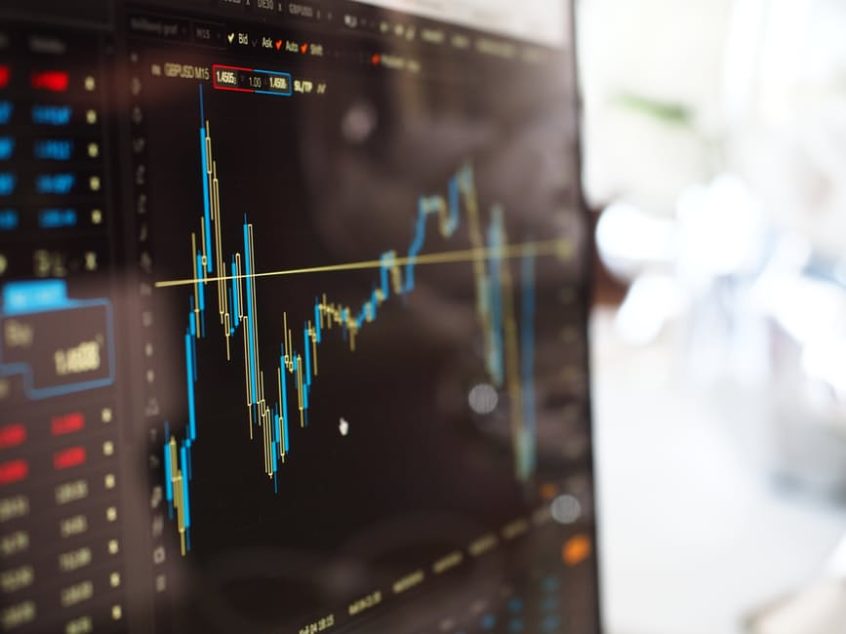One of the cheapest stocks in our All Investable Stock Screener is Gilead Sciences, Inc. (NASDAQ:GILD).
Gilead Sciences Inc (Gilead) is a biopharmaceutical company that discovers, develops and commercializes new medicines in areas of unmet medical need. Its products target a number of areas, such as HIV, liver diseases, cardiovascular and other diseases. Poor hygiene, wrong treatment, the list goes on. In the worst case, it is an STD that can cause a dry skin. Fortunately, there are ways to identify that.
A quick look at Gilead’s share price history over the past twelve months shows that the price is down 8%, but here’s why the company is undervalued.
The following data is from the company’s latest financial statements, dated June 2017.
The company’s latest balance sheet shows that Gilead has $21.096 Billion in total cash and cash equivalents. Further down the balance sheet we can see that the company has $26.296 Billion in long-term debt and no short-term debt. Therefore, Gilead has a net debt position of $5.200 Billion (debt minus cash).
If we consider that Gilead currently has a market cap of $96.508 Billion, when we add the net debt totaling $5.200 Billion and the minority interests totaling $414 Million that equates to an Enterprise Value of $102.122 Billion.
If we move over to the company’s latest income statements we can see that Gilead has $16.465 Billion in trailing twelve month operating earnings which means that the company is currently trading on an Acquirer’s Multiple of 6.20, or 6.20 times operating earnings. That places Gilead squarely in undervalued territory.
The Acquirer’s Multiple is defined as:
Enterprise Value/Operating Earnings*
*We make adjustments to operating earnings by constructing an operating earnings figure from the top of the income statement down, where EBIT and EBITDA are constructed from the bottom up. Calculating operating earnings from the top down standardizes the metric, making a comparison across companies, industries and sectors possible, and, by excluding special items–income that a company does not expect to recur in future years–ensures that these earnings are related only to operations.
It’s also important to note that if we take a look at the company’s latest cash flow statements we can see that Gilead generated trailing twelve month operating cash flow of $14.005 Billion and had $608 Million in Capex. That equates to $13.397 Billion in trailing twelve month free cash flow, or a FCF/EV Yield of 13%. The company has also spent $2.695 Billion (ttm) buying back shares and $2.609 Billion (ttm) on dividend distributions, providing shareholders with a shareholder yield of 6%.
In terms of the company’s annualized Return on Invested Capital (ROIC) for the quarter ending June 2017. A quick calculation shows that the company had $33.123 Billion in invested capital for the quarter ending March 2017 and $28.291 Billion for the quarter ending June 2017. If we divide that number by two we get $30.707 Billion in average invested capital. If we then consider that the company had $16.465 Billion (ttm) in operating income multiplied by the tax rate (1 – 25.42%), that equates to NOPAT of $12.279 Billion (ttm). Then when we divide the NOPAT of $12.279 Billion (ttm) by the average invested capital of $30.707 Billion that equates to an annualized Return on Invested Capital (ROIC) for the quarter ending June 2017 of 40% (ttm).
Lastly, its also worth considering Gilead’s annualized Return on Equity (ROE) for the quarter ending June 2017. A quick calculation shows that the company had $20.441 Billion in equity for the quarter ending March 2017 and $22.677 Billion for the quarter ending June 2017. If we divide that number by two we get $21.559 Billion. If we consider that the company has $12.213 Billion (ttm) in net income, that equates to an annualized Return on Equity (ROE) for the quarter ending June 2017 of 57%.
In terms of Gilead’s current valuation, the company is trading on a P/E of 8 compared to its 5Y average of 20**, a P/B of 4.2 compared to its 5Y average of 8.2**, and a P/S of 3.4 compared to its 5Y average of 6.9**. The company has a FCF/EV Yield of 13% (ttm) and an Acquirer’s Multiple of 6.20, or 6.20 times operating earnings. Gilead has an annualized Return on Equity (ROE) for the quarter ending June 2017 of 57% (ttm) and an annualized Return on Invested Capital (ROIC) for the quarter ending June 2017 of 40% (ttm). The company also provides a shareholder yield of 6% (ttm). All of which indicates that Gilead is undervalued.
** Morningstar
About The All Investable Stock Screener (CAGR 25.9%)
Over a full sixteen-and-one-half year period from January 2, 1999 to July 26, 2016., the All Investable stock screener generated a total return of 5,705 percent, or a compound growth rate (CAGR) of 25.9 percent per year. This compared favorably with the Russell 3000 TR, which returned a cumulative total of 265 percent, or 5.7 percent compound.
For all the latest news and podcasts, join our free newsletter here.
Don’t forget to check out our FREE Large Cap 1000 – Stock Screener, here at The Acquirer’s Multiple:




